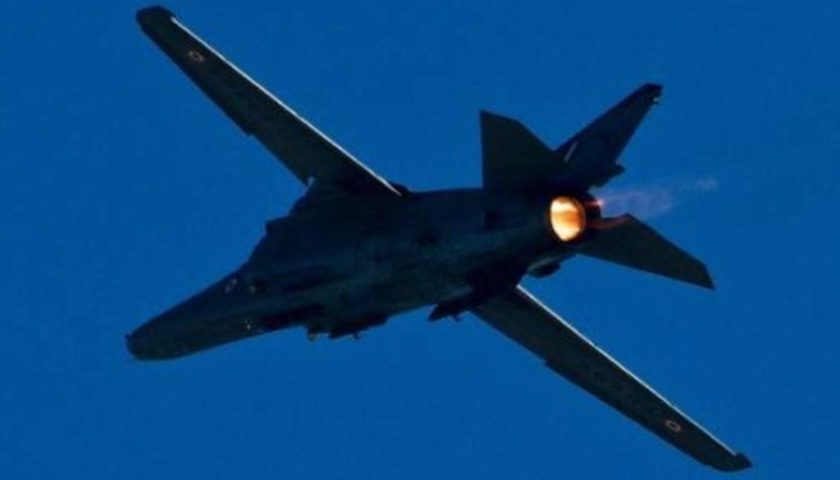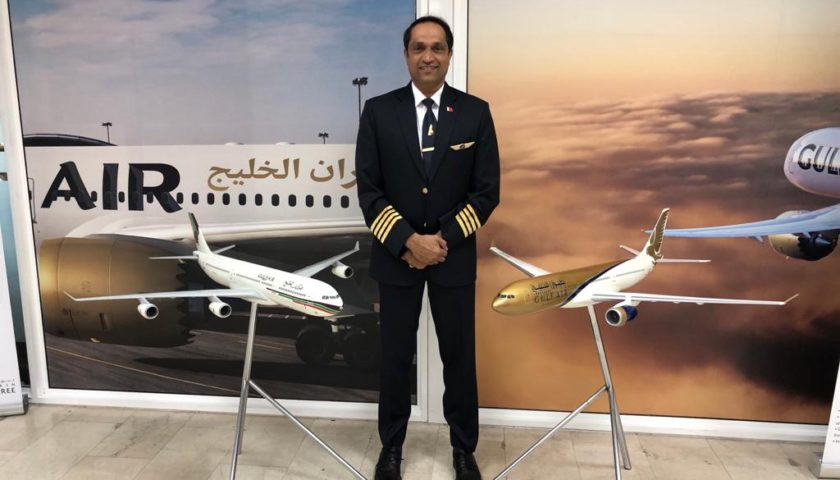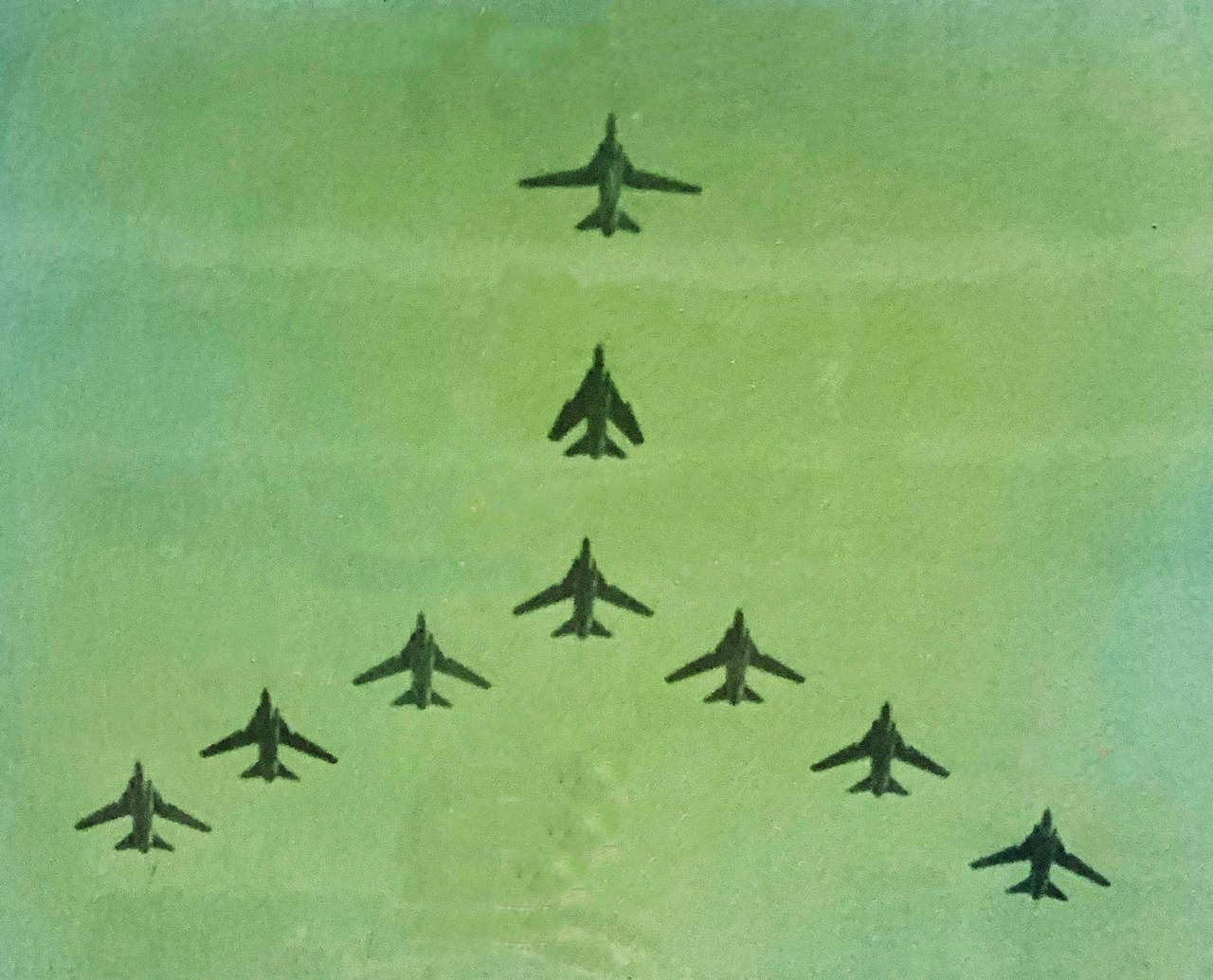Lord of Sea and Earth and Air,
Cecil Edric Mornington Roberts
Listen to the Pilot’s prayer—
Send him wind that’s steady and strong,
Grant that his engine sings the song
Of flawless tone, by which he knows
It shall not fail him where he goes;
Landing, gliding, in curve, half-roll—
Grant him, O Lord, a full control,
That he may learn in heights of Heaven
The rapture altitude has given,
That he shall know the joy they feel
Who ride Thy realms on Birds of Steel.
To be a military pilot, you need a pure passion for aviation. You have to have your priorities in life set straight so that you can dedicate all your spare time to ensure that you succeed. Despite all the hard work, long days, sacrifice, studying and never-ending training, you’d still not find an Air Force pilot who would trade his or her job for any other. In this article, my friend Wg Cdr Roopesh Neramballi (Retd) brings out one of the many hats that he wore during his career in IAF. The memoir also brings out a very important aspect of hand flying and precision brought out during Flypast which looks simple on the surface.
“Over to you Roopy.”

Every unit/formation in defense forces has its aim, role, and responsibility during peace and war. Similarly, Squadrons in the IAF have their roles cut out to meet the larger goal of the Indian Air Force. The pilots posted in these squadrons are trained and operationalized to meet the squadrons’ aim and responsibility. Apart from their operational roles, once in a while Squadrons are tasked to participate in important events like the Republic Day, IAF day, Firepower demonstration, Passing out parade at NDA and AFA, and Aero India Airshow. These are called as Flypasts conducted on ceremonial or important occasions tied to the anniversary, national celebrations, or memorial occasions. The flypast is part of broader functions where the group of aircraft has to arrive on the scene at a precise time and in visually appealing compact formation visible to dignitaries and the crowd.
It is important to understand that flypasts are not aerobatic display. Aerobatic displays are carried out by dedicated ‘display teams’ like the Suryakiran and Sarang or by single aircraft to demonstrate the maneuvering capability. They carry out various maneuvers in front of the audience and the display lasts for about 10 to 15 minutes. These teams are dedicated to display and do not train for any operational roles.
The only thing similar to Flypast is the basics of flying in close formation. Close formation flying is an integral part of the flying training syllabus in the IAF on all types of aircraft. This involves aircraft flying very close to each other. One aircraft is nominated as the lead aircraft and he is responsible to fly the aircraft as accurately and smoothly as possible. The other aircraft will join up in close formation and will maintain their pre-briefed position with respect to the leader. The technique of flying in close proximity to the other aircraft is universal, the aircraft formatting needs to maintain what is known as ‘P.A.D’.
- P for Plane: First and foremost, to be in the same plane as the lead aircraft, the aircraft formatting needs to keep the top and bottom surface of the wing of the lead aircraft equally visible. By doing so the formatting aircraft will be in sync even during turns/Climb/descend or combination thereof.
- A for Angle: A certain angle needs to be constantly maintained with the lead aircraft, this is normally achieved by keeping the lead aircraft cockpit and lead aircraft wingtip inline (as seen by the formatting pilot).
- D for displacement: This is the distance between two aircraft measured in terms of wingspan for example ‘half wingspan or one full wingspan displacement’. This is achieved by the position of the fin/or any other part of the lead aircraft in line with the cockpit of the formatting aircraft.

Relevance: Why is close formation taught and practised in military flying? Is it for display purposes only? The answer is ‘NO’. CF flying is a precursor to multi-aircraft tactical formation, which forms the basis of all Ground attack/Air defence multi-aircraft missions. One has to be adept at close formation even for Air to Air refuelling, which has become an integral part of military aerial operations.
Display: Flypasts are done as part of large scale celebrations. It is a spectacle to see so many aircraft of various types fly at low levels in different formations. Some of the common formations are 3 aircraft VIC formation, 5 ac Arrowhead formation, and the 4 aircraft Diamond formation. Some other formations of interest are the air to air refueling & missing man formation (to salute the fallen heroes)
I was involved in planning and flying quite a few flypasts during my career as a fighter pilot in the IAF. Notable ones were the 9 aircraft ‘Inverted wine glass’ formation for AF Day 1996. Three aircraft VIC formation each dropping 32, 100Kg bombs for FPD in 1999, and a 22 aircraft formation depicting ‘IAF’ for AF day 2001. During my tenure As Ops staff in SWAC, I was in charge of planning and conducting flypast and display over Ahmedabad consisting of more than 50 aircraft followed by a display by the ‘Suryakiran Team’. All kinds of flypasts are an experience in itself. I have picked the above three (as notable) while flypasts like Republic Day, NDA flypast for the 100th Course POP, and flypast for the opening ceremony of Aero India were also enjoyable and satisfying.
My first experience came whilst I was a buoyant young fully ops Flg Offr with just 2.5 years of service. Our Sqn was tasked to fly a nine aircraft ‘Inverted wine Glass formation for the AF day in 1996. The SASO WAC was leading the formation. We had exactly a month to plan/practice and execute the flypast. We had a cool and composed Commanding Officer (CO), a very meticulous Flight Commander (Flt Cdr) and a Senior Technical Officer (STO) full of Josh.
First and foremost the aircraft availability. We required 9 aircraft in the formation, 2 aircraft as airborne standby, and 2 aircraft as ground standby. A total of 13 aircraft. These serviceability numbers are huge for a fighter sqn. Hats off to the engineering department, we got what we wanted.
Planning: Deputy Flt Cdr was given the task of flying in trainer aircraft with SASO, to help in navigating and timekeeping. While SASO was leading and doing the rest of the job. The flight commander planned and supervised that each pilot gor adequate practice befor the actual 9 aircraft practice started. I was made the Number 9, last aircraft in the formation on the starboard side.
The show: MiG 23 BN was a Swing wing aircraft (The wing sweep was forward-most 16 degrees for Takeoff and Landing, Sweep 45 degrees for Tactical flying, and sweep 72 degrees for high speed getaways), The wing sweep position of each aircraft is as depicted…

This flypast was viewed from the front meaning the audience would sight the formation flying at low levels from their front and pass overhead towards their back.
Plan: The flypast was to be flown over Palam (IGI airport). Few more squadrons were also tasked to take part in the flypast including transport, helicopters, Jaguar 5 aircraft arrowhead, and MiG 29 3 ac VIC formation. The plan was worked out by the WAC Ops branch, wherein the routes, time over the dais, and all details were planned and forwarded to the participating squadrons. Coordination between formations and sticking to time and allotted height and planning contingencies is each formation leader’s responsibility. All formations flew out of different bases and were allotted a holding point (last point from where the formation sets course towards the dais without any turns involved). Being early or late by even 10 seconds would mean either you are affected by the preceding formations wake turbulence or affecting the formation following you. This could not only endanger the safety of aircraft as well as spectators. This also adversely affected the live commentary and parade proceedings.
Execution: So 13 aircraft ie 11 fighters and 2 trainers (lead aircraft was a trainer ac) flew to AF Stn Sirsa for a 9-day detachment. IGI is the busiest airport in India. Getting a window of 45 minutes means a lot of civil – defense coordination and cooperation. NOTAM was issued for 4 days (the D day, 08 OCT 96, Full dress rehearsal, one practice day, and one standby day]
Practice flypasts for our formation was done at Sirsa, Video recordings were used for debriefs, few changes to the original plan had to be made like the sweep angle of the last two aircraft were changed to 45 instead of 16 degrees as originally planned. This reduced the workload on the last two aircraft as any small correction made by the lead aircraft snowballed into a bigger correction by the last aircraft. We were also immensely helped by the standby aircraft which flew right above the formation and continuously passed information about the symmetry of the formation. These debrief (real-time and after the flypast) helped each member of the formation to ascertain the references to maintain his correct position.
Practice flypasts over Palam with timeslots as per the final day was extremely beneficial to understand and iron out a lot of finer details. One important thing that came out was the fuel burnt by the last four aircraft was considerably higher than the others. Thus the recovery sequence for landing was changed to number 6,7,8 & 9 landing ahead of the first 5 aircraft.
The final day was uneventful with fine weather, aircraft serviceability, crew fitness, and every other detail worked out during the practice just fell in place. The icing on the cake especially for me as a youngster was when all formation members were airlifted from Sirsa to Delhi to attend the dinner hosted by the Chief of Air Staff. The dignitaries included Prime Minister.
Conclusion: The routine of a pilot in the IAF is quite rigorous with lots of training (both on the ground and in the air), Exercises (within base, command, entire IAF or with Army/Navy and even foreign Air Forces), Detachments, ORP duties, SAR duties (for Helicopters), Air maintenance flights to Leh (by Transport aircraft), etc etc. the list just goes on and on. Once in a while the squadrons are tasked for other duties that are temporary in nature but still require a lot of planning, practice, and coordination to achieve the desired results. Flypasts are one such task. Although for the spectators, it’s just a glimpse of many types of aircraft flying close to each other in different formations.

Wg Cdr Roopesh Neramballi (Retd), 10,000 hrs of flying in military and civil, aircrafts flown Mig 21, Mig 23, Su 30 K and MKI, ERJ 170, A-320. QFI and Ops Staff.
Related article: Formation Aerobatic Display Team: SKAT. Click here to read.
Related article: My First Air Travel Experience. Click to read.
Related article: Flight Instructors. Click to read.



